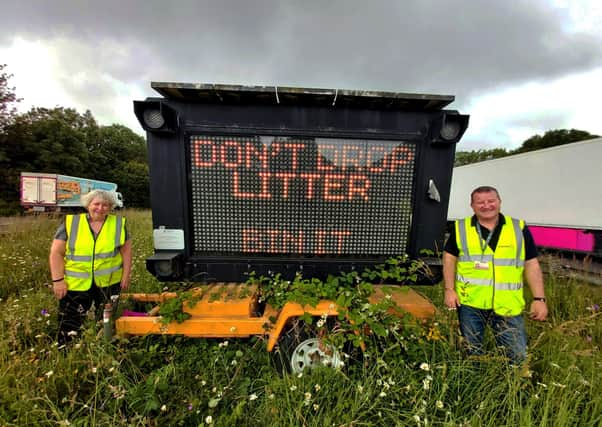A27 litter removal work continues in Lewes – as new roadside signs are trialled


Lewes District Council’s Environment First team has been back in action clearing the east bound carriageway between Falmer and Beddingham.
It comes after the team removed a whopping two tonnes of litter from the westbound carriageway in May – see more here.
Advertisement
Hide AdAdvertisement
Hide AdThe overnight work started on Monday night and finishes on Friday morning.
Lane closures have been put in place to ensure the rubbish can be removed safely.
Councillor Julie Carr, Cabinet member for Recycling, Waste and Open Spaces, said: “I’m very proud of the work our Environment First team are doing on the A27 and I implore drivers and their passengers on the A27 to behave responsibly and take their litter home.
“Rest assured, if we can identify litter louts we will track them down and prosecute them.”
Advertisement
Hide AdAdvertisement
Hide AdThe work coincides with a new pilot scheme to trial the use of electronic roadside signs displaying anti-littering messages.
Highways England chose to trial the signs in the Lewes district, on the section of the A27 dual carriageway between the Ashcombe and Beddingham roundabouts.
The trial will continue for four weeks, after which Highways England will evaluate its effectiveness and consider rolling out to other parts of the country.
Ms Carr said she was ‘delighted’ that the district had been chosen for the trial.
Advertisement
Hide AdAdvertisement
Hide Ad“Our message to anyone using this road is simple – bin your litter or take it home,” she said.
Anup Shrestha, Highways England’s Litter Champion in the South East, said: “We collect litter throughout the South East regularly from motorways and some A-roads, but this time we wanted to take particular action in a bid to encourage drivers to take their litter home, building on the excellent work carried out by Lewes District Council.
“If people don’t drop litter in the first place it wouldn’t need to be picked up.
“Litter is not only unsightly and a risk to wildlife and the environment, it also puts workers at risk collecting it and diverts time and money that could be better spent on improving the network.”